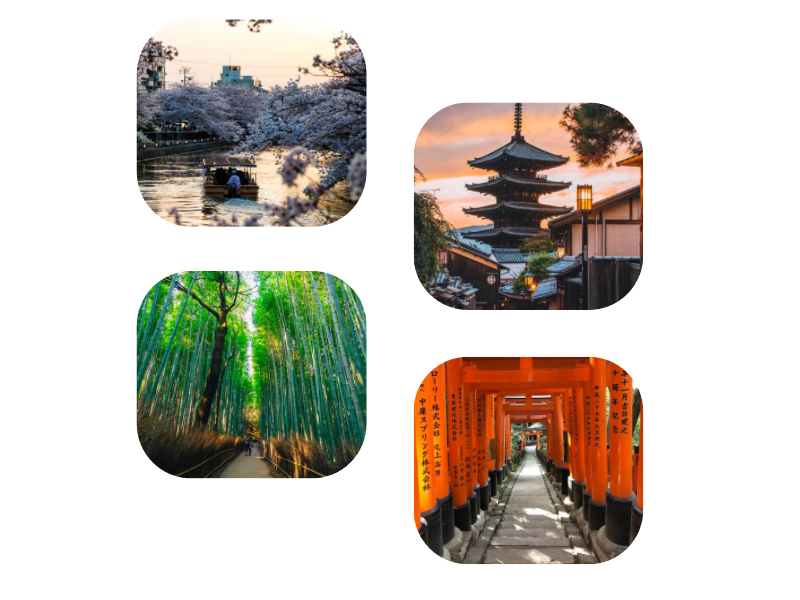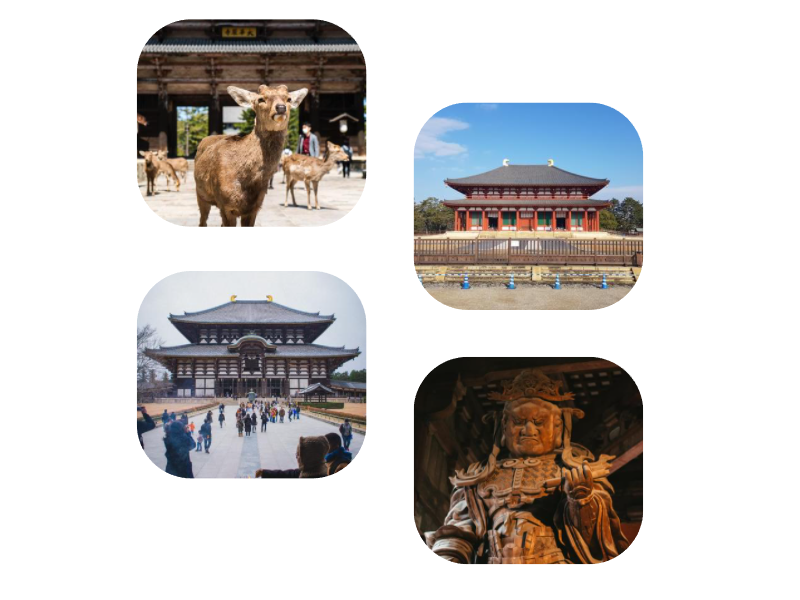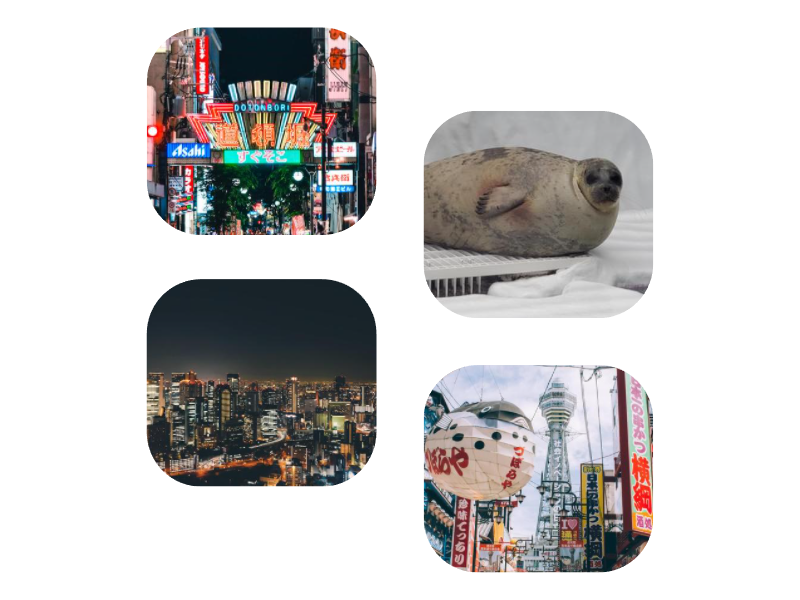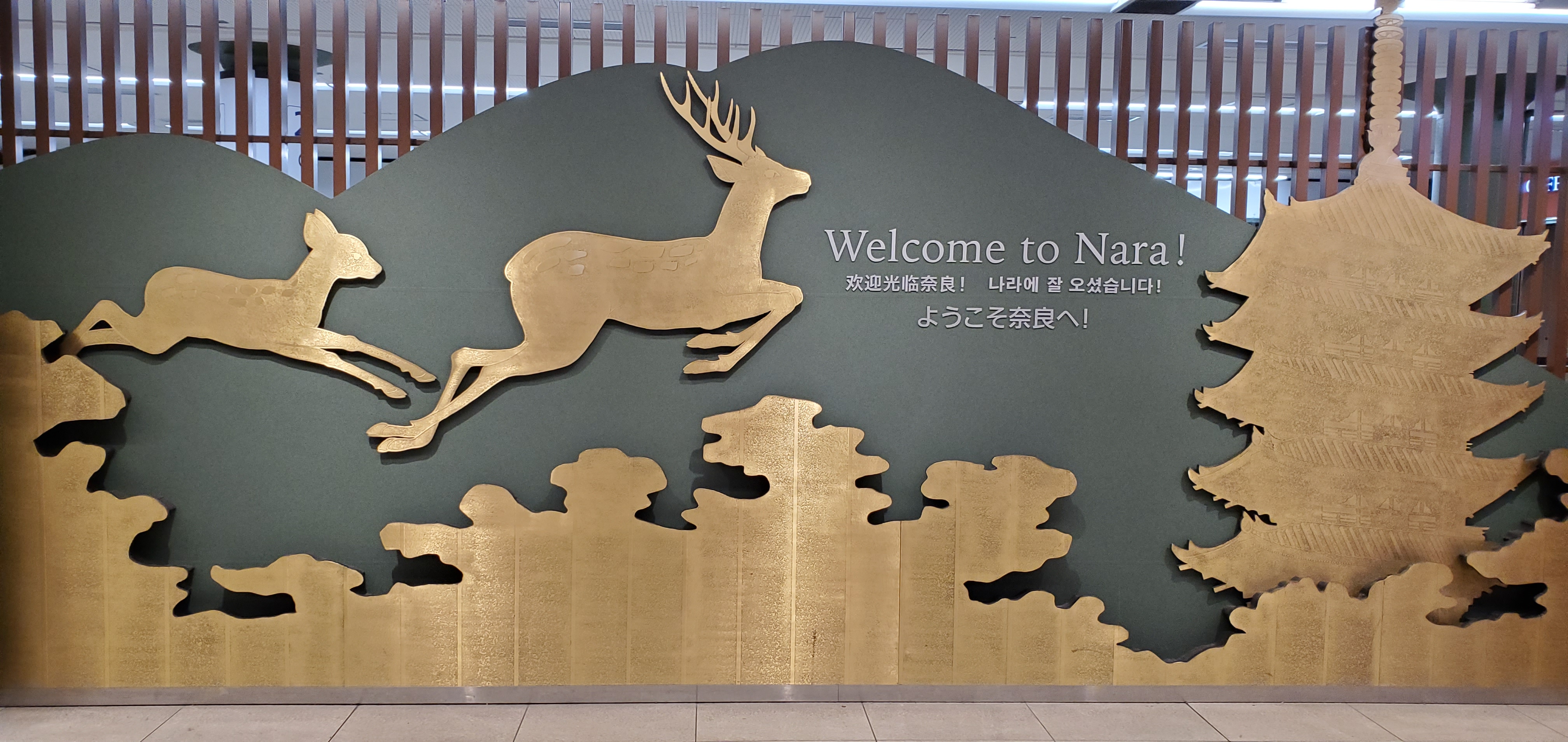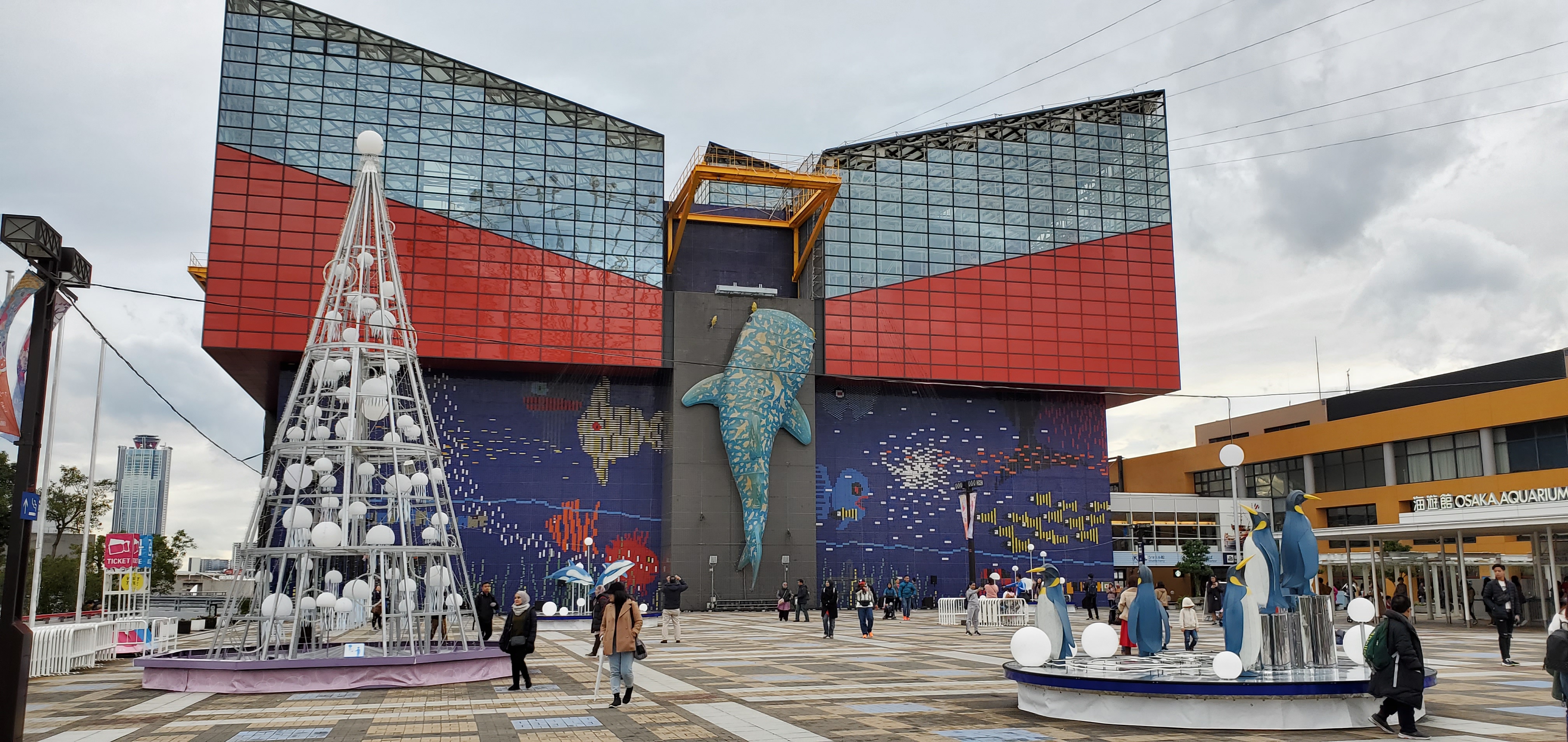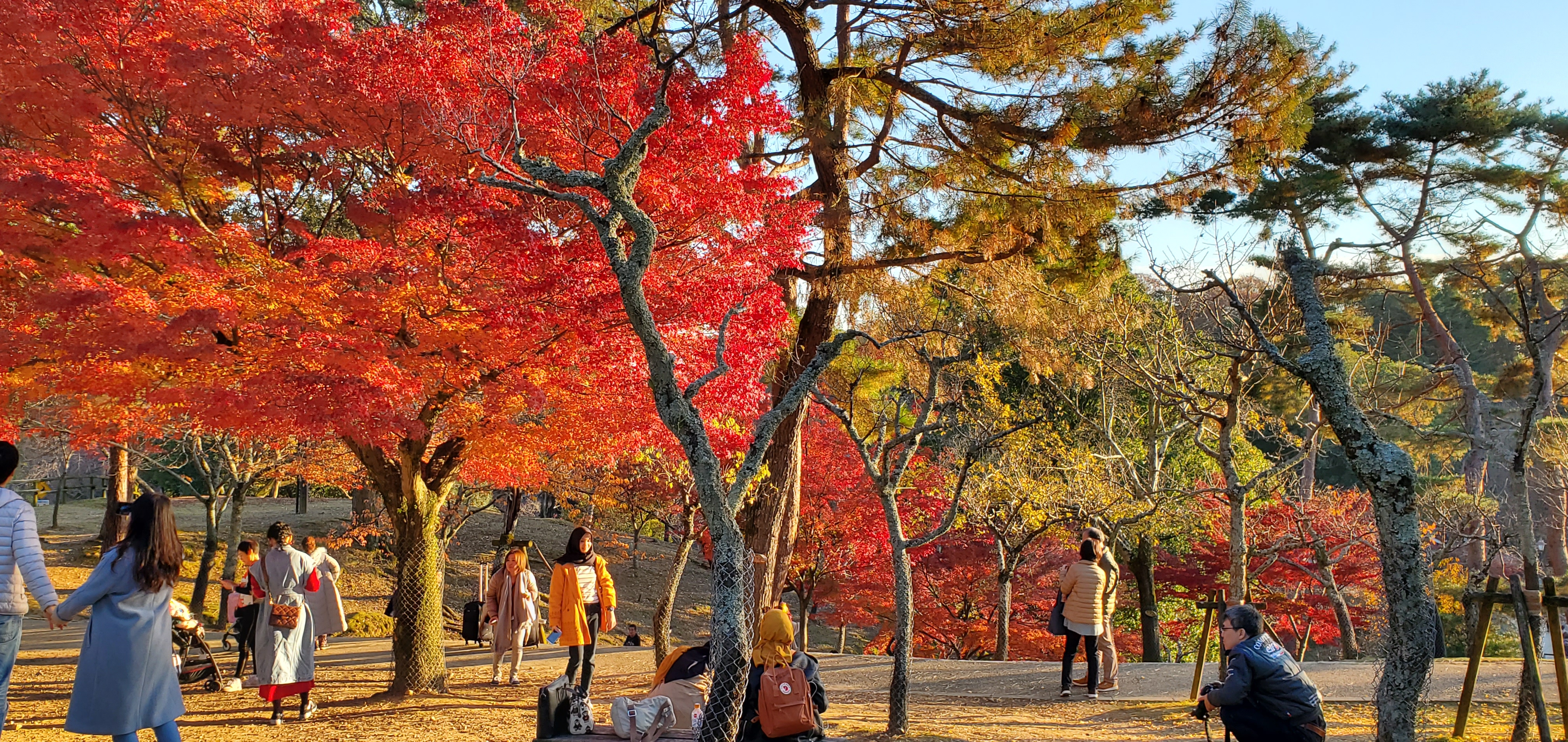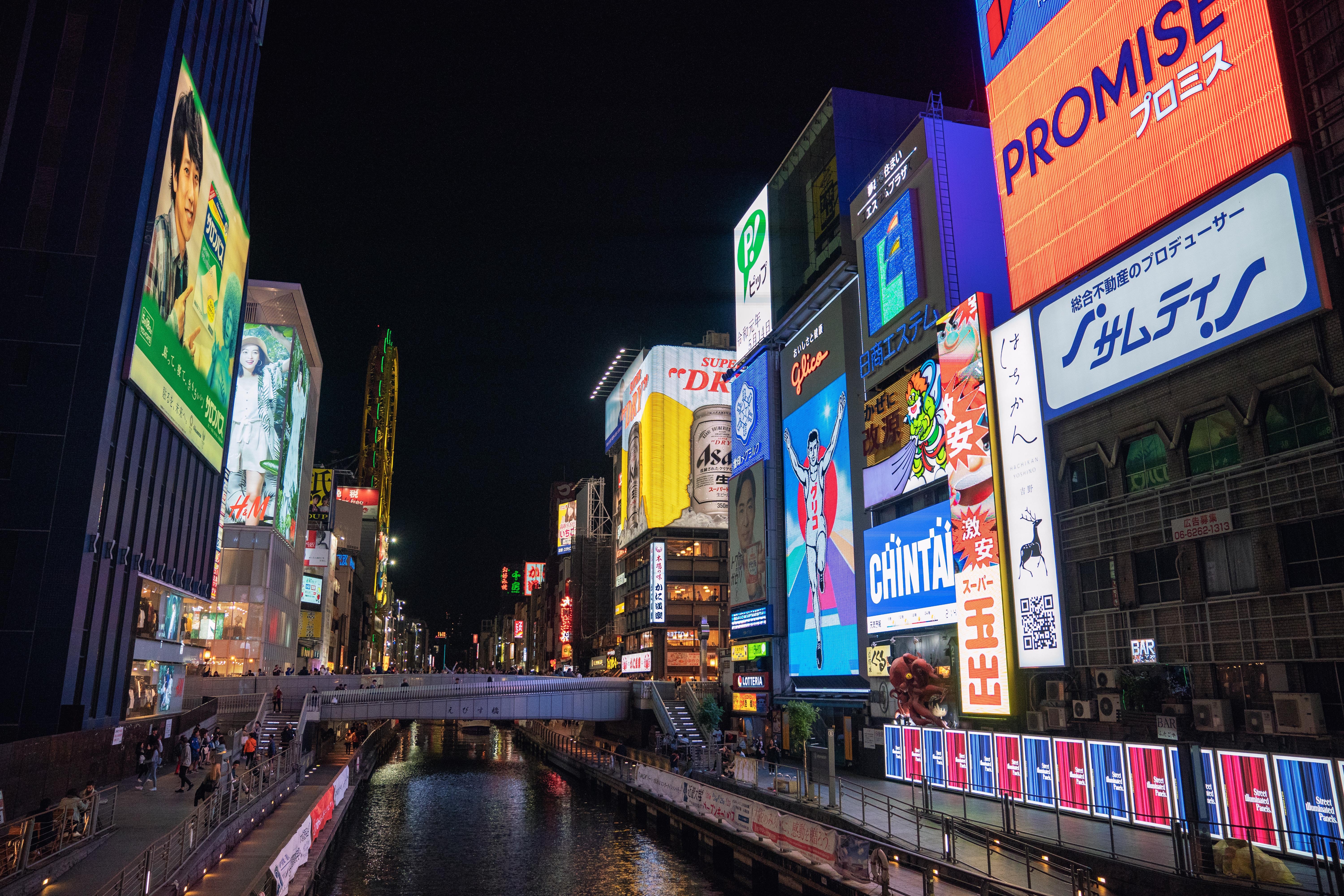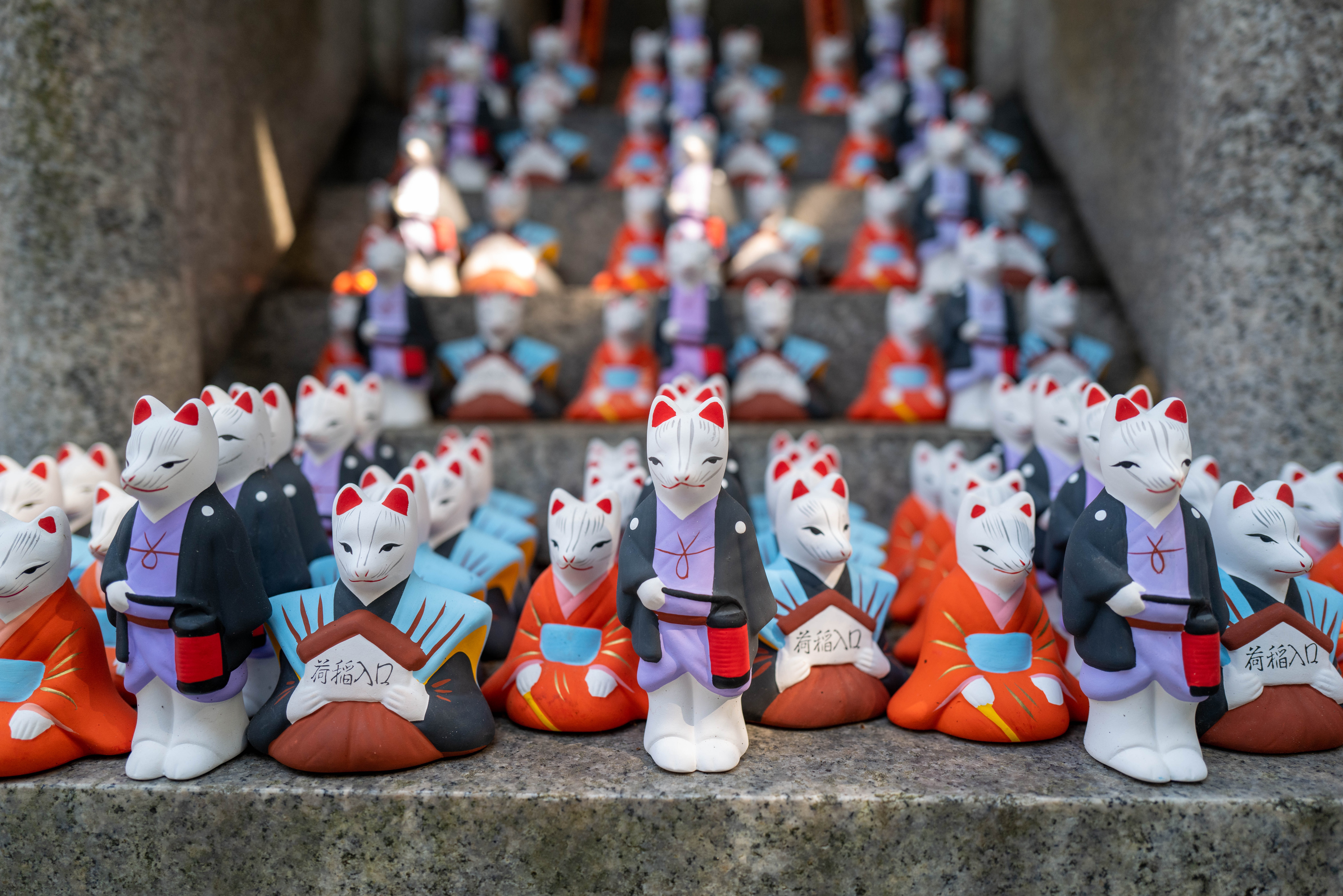Sightseeing - Kansai
The Kansai region (also known as the Kinki Region) of Japan is located in the southwest. It is known for delicious food such as takoyaki (octopus balls) and kushikatsu (deep-fried skewers).
Kansai is made up of a number of prefectures: Kyoto, Nara, Osaka, Mie, Wakayama, and Hyogo (the number varies at times). The area is home to the popular Osaka accent (Kansai-ben),
and is the birthplace of manzai (stand-up duos) style comedy, such as Downtown.
A contrast to Tokyo, it is a much quieter area with a countryside vibe. There is, however, plenty of city-life as well. Just like Tokyo, there are numerous arcades, karaoke rooms, and restaurants
to hang out in during the evening with friends. The Kansai area is a good option for those who would like to experience Japan without feeling too overwhelmed because of the hustle and bustle
environment of a city. Here, we will discuss a few of the most popular places to visit in the Kansai region.
Kyoto
Before Tokyo, the capital of Japan was Kyoto. It is a place full of history and is great for anyone interested in traditional Japan, and is also home to many beautiful shrines, temples, and vegetation,
such as Kiyomizudera Temple and Arashiyama.
Another highlight of Kyoto are the geisha and maiko that tourists may have the opportunity to catch a glimpse off as they hurry to their next appointment. If you happen to come across one, however,
do not disturb them by asking for a photo, as they are likely working. In fact, some areas prohibit photography for this reason, and violators are met with a fine. If you would like to take a photo
of a geisha, you need to book an appointment with them. However, this requires connections and is very expensive. Otherwise, there are some restaurants that allow tourists to experience
performances by maiko (geisha in-training) in some places, but these can be expensive as well.
Tourists can also find thousands of the infamous torii gates in Fushimi Inari Taisha. The temple offers o-mamori (charms to protect against evil spirits, promote a healthy birth, pray for success,
etc.), various street foods, and fortune-telling. Visitors can hike to the summit of the mountain in about one hour, with plenty of rest areas and souvenir shops in between. Around the shrine grounds,
one can find images and statues of white foxes, as they are thought to be the messengers for Inari, the Shinto god of rice.
By train, Kyoto is around two hours from Tokyo and 30 minutes from Osaka. Flights to Kyoto are possible as well, and will take around 1 hour.
Nara
Have you ever been bowed to by a deer? No? Then Nara is the place for you!
Inside Nara Park, there lives over 1,000 free-roaming deer waiting to be greeted by tourists with crackers. They have been designated as a national treasure by Japan and are not
domesticated, but if you walk up to one and bow, you will be met with a bow from the deer, who then waits for their special treat. Some of them are pushier than others, and are not afraid
to nudge you or search inside your pockets if they smell the crackers. If you plan to feed the deer, make sure to use only the crackers provided by the park
instead of any sold by a third party.
Nara Park is also the location of the very first UNESCO World Heritage Site in Japan: Horyuji Temple.
Nara was the first permanent capital of Japan, and is another prefecture in Japan with great historic value.
Visitors can walk around the old palace grounds of Heijo Palace, another UNESCO World Heritage Site, and visit the nearby museum to see relics and learn more about Japan's history.
Another historic location near Nara Park is Todaiji Temple, whose main hall, Daibutsuden, was once known as the largest wooden building in the world. Inside, visitors can
tour different buildings on the grounds, such as the Great South Gate and Bell Tower, in addition to various Buddha and other deity statues. There is also a museum.
Via train, a trip from Tokyo to Nara is about three hours, while Osaka is around 30 minutes away.
Osaka
One of the most well-known areas in Osaka is Dotonbori, where one can find the famous Glico Running Man sign. Along the nearly 2-mile long Dotonbori are various shops and
restaurants for everyone to enjoy, and a large ferris wheel. Tourists can walk along the street, enjoying the reflection of the numerous neon signs in the river, or ride one of the
many cruises offered for a more comfortable viewing experience.
If you are looking for a view, Shin Umeda City is a great place to go. Umeda Sky Building is a 40-story building has restaurants, shops, and cafés, with an outdoor observatory on the rooftop.
At the observatory, there is a 360° view of Osaka. It is open from morning until near midnight, meaning that visitors can experience a beautiful sunrise, sunset, and nightly view of Osaka.
On the coast of Osaka, there are various family activities available, including the Tempozan Giant Ferris Wheel, Universal Studios Japan, and the Osaka Aquarium Kaiyukan, all of which
are within an hour of each other. The aquarium has over 30,000 animals, including penguins, sharks, crabs, and the ringed seal. Sitting between the Osaka Aquarium Kaiyukan and the Tempozan Giant Ferris Wheel
is the Tempozan Market Place, which contains a food court, clothing stores, and souvenir shops. There is also a harbor with an enjoyable view located behind the aquarium and shopping mall where
tourists can watch the ships come and go.
